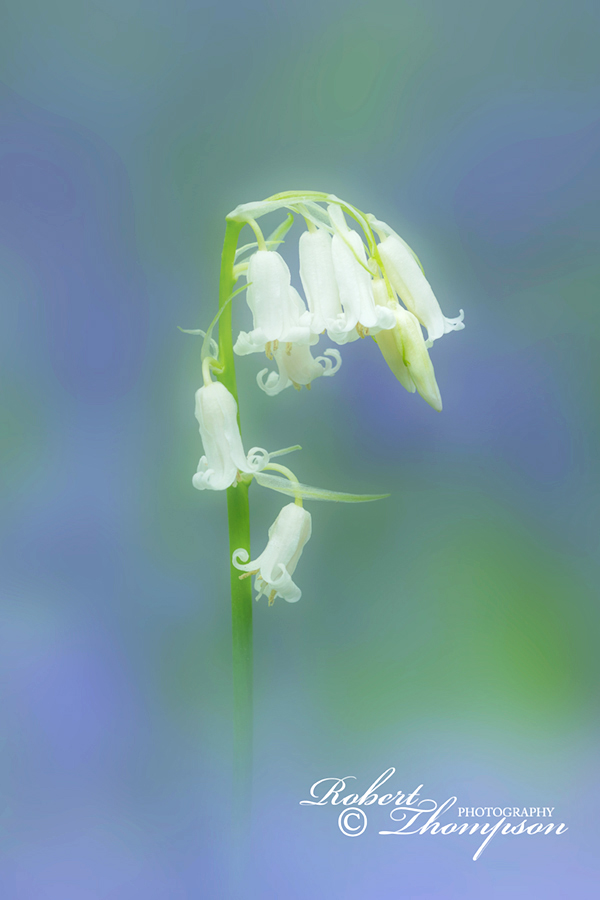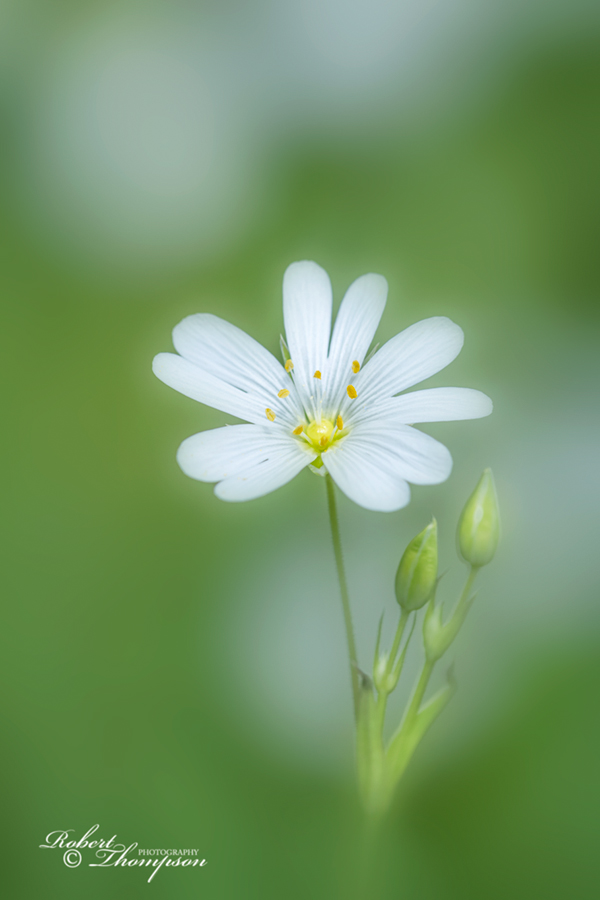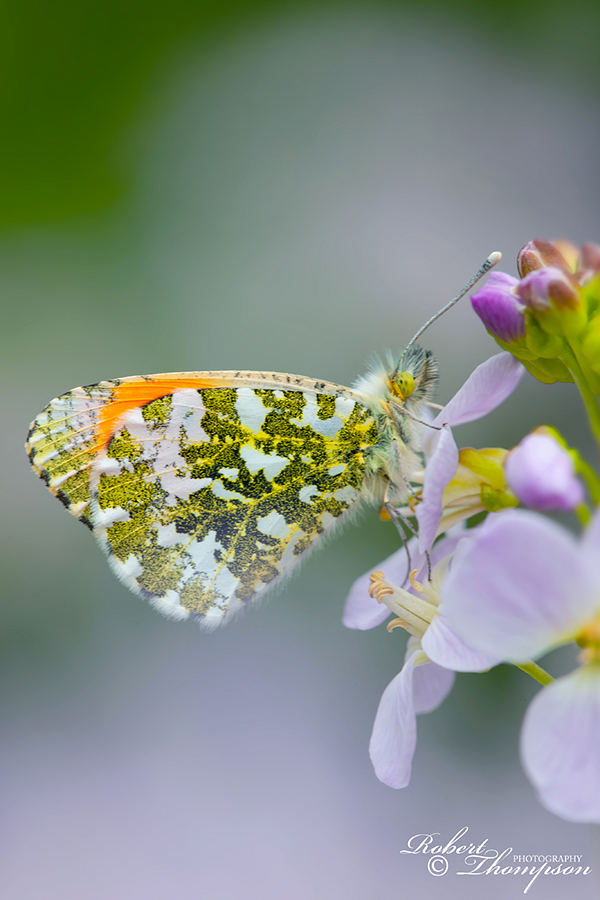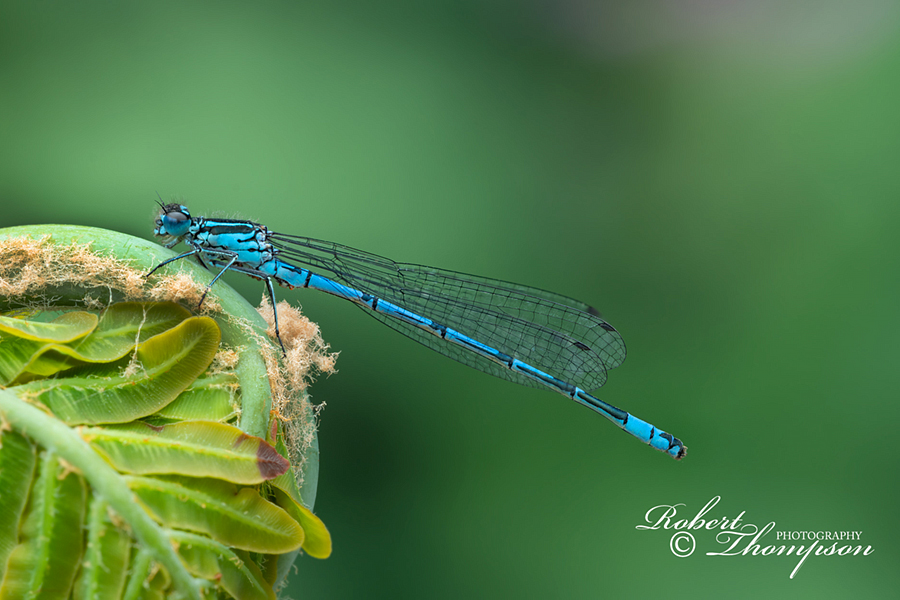May Macro Matters
May is the month when spring really kicks off and the woods begin to colour up. The yellow star-shaped celandines and wood anemones give way to the blaze of blue as the bluebells colour the woodland floor. Blossom radiates from many of the trees and hedgerows with the wildflowers slowly emerging from their winter sleep.

Bluebell Hyacinthoides non-scripta
If you look carefully among the bluebells there are always white alba variants among the masses. Photographed with a long telephoto
macro lens shooting through the bluebells in the foreground.
Nikon D850, 200mm micro nikkor lens, ISO 200, tripod.
The vibrant white of Greater Stitchwort can be seen along the road verges and the leaves of the trees are expanding with each passing day. The heavily scented smell of Wild Garlic adds an aroma to the air in woodland habitats. Another small woodland flower easily missed is the Dog Violet with its small heart-shaped leaves. They are an important source of nectar for butterflies at this time of the year.

Greater Stitchwort Stellaria holostea
I always find these flowers very photogenic with their orange stamens set against the white petals. It’s important to look carefully among the flowers first selecting one that is more isolated
which will help diffuse the background. If you don’t have a long telephoto macro use a 200mm lens with extension tubes it will achieve the same result.
Nikon Z7 II , 200mm micro nikkor lens, ISO 100, tripod.
Butterflies are now beginning to make an appearance with the Orange Tips and the winter hibernators, like the Peacock, Small Tortoiseshell and Speckled Wood fluttering along the woodland margins and hedgerows in the dappled sunlight. It’s been a dry few weeks and some of the orchids have yet to make an appearance in any numbers.

Orange Tip Anthocharis cardamines
Nikon D3x, 200mm micro nikkor lens, ISO 200, tripod.
The male Orange Tip is the only one with the orange colouring on the forewings. Females are white, but the undersides of the hindwings have the mottled appearance like the males. Orange Tip eggs are among the easiest to find. If you look on the undersides of the Cuckoo or Lady’s Smock flowers you often see a tiny orange egg less than a millimetre in size.

Green-Winged Orchid Anacamptis morio
The Green-winged Orchid is Northern Ireland’s rarest orchid. It occurs in a single coastal location and was discovered back in the early 1980s. It flowers around mid-May.
Nikon D850, 15mm Laowa wide-angle macro lens, ISO 100, tripod.
The larvae of the damselflies and larger dragonflies are making their way into the shallows in preparation for emergence. The Variable, Azure and Large Red damselflies are the first to make an appearance followed by the Four-spotted chaser towards the middle of the month.

Azure Damselfly Coenagrion puella
Both the Azure and Variable damselflies when newly emerged are pale brown in colour which is referred to as the teneral stage. The vibrant blue colour
develops during the coming days as the insect matures.
Nikon D850, 200mm micro nikkor lens, ISO 100, tripod.
The Emperor Moth one of the most iconic moths in Ireland and Britain can be seen during late April and early May. The males fly during the day in sunshine seeking out newly emerged females which frequently rest among the heather. It belongs to a family of super moths called Saturniidae

Emperor Moth Saturnia pavonia
The Emperor is, without doubt, one of the largest and the most colourful moths in the British Isles. Females are a bit larger than males and usually remain among the foliage waiting for
passing males. During sunshine, male emperors are often seen flying at high speed across heathery bogs in search of freshly emerged females. Their large feathery antennae are capable of
detecting the pheromone released by the female from several kilometres away.
It is the only species of Saturniidae (a large family of super moths) that occurs in the British Isles. These colourful moths are found mainly in the tropical and subtropical regions of the world.
Photographically, it’s a great time to get out with the camera and explore the smaller world.

